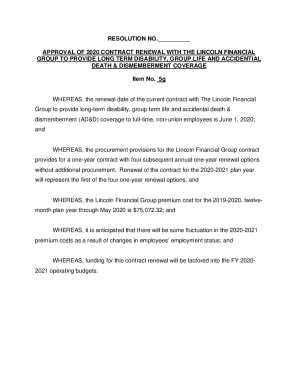Key Elements Of A Proxy Statement (Form DEF 14A): A Practical Overview

Table of Contents
Understanding the Purpose of a Proxy Statement (Form DEF 14A)
The proxy statement, formally known as Form DEF 14A, is a critical document filed with the Securities and Exchange Commission (SEC) by publicly traded companies. Its primary purpose is to facilitate shareholder voting on important corporate matters. The SEC's role is to ensure the accuracy and completeness of the information disclosed within the proxy statement, protecting investors from misleading or manipulative practices related to proxy solicitation. This ensures fair and transparent corporate governance.
This vital document enables shareholders to actively participate in corporate decision-making. Specifically, it allows them to:
- Elect directors: Vote for the individuals who will oversee the company's management and strategic direction.
- Approve executive compensation plans: Review and vote on the compensation packages for top executives, ensuring accountability and alignment with company performance.
- Submit and vote on shareholder proposals: Propose resolutions on matters of corporate governance, social responsibility, or other significant issues.
- Vote on major corporate transactions: Consider and approve or reject significant proposals, such as mergers, acquisitions, or significant divestitures. Understanding these proposals is vital for informed investment decisions.
Key Sections and Information Within a Proxy Statement
A DEF 14A filing typically follows a structured format, although the specific content varies depending on the company and the matters up for shareholder vote. Understanding the key sections is vital for different stakeholders, whether they are long-term investors, short-term traders, or corporate governance specialists. Key sections often include:
- Executive Summary: This provides a concise overview of the key proposals to be voted on at the shareholder meeting or by written consent, acting as a roadmap for the rest of the document. It's crucial for quickly understanding the key issues at stake.
- Board of Directors: This section details the composition of the board, including biographical information about each director, their qualifications, committee memberships, and potentially, their compensation. It's vital for assessing board independence and expertise.
- Executive Compensation: This section outlines the compensation packages of the company's top executives, including salaries, bonuses, stock options, and other benefits. It often includes a detailed analysis of the pay ratio comparing executive compensation to the median employee compensation. Understanding this information is critical for evaluating management's performance and alignment with shareholder interests.
- Shareholder Proposals: This section details any proposals submitted by shareholders for consideration at the upcoming meeting. These proposals can range from changes in corporate governance to social responsibility initiatives. Understanding these proposals allows investors to align their votes with their values.
- Mergers, Acquisitions, and Other Corporate Transactions: This section provides detailed information about any proposed mergers, acquisitions, divestitures, or other significant corporate actions. A thorough understanding of these sections is crucial for making informed investment decisions.
- Voting Procedures: This section explains how shareholders can cast their votes, whether by mail, electronically, or in person at the annual meeting. Understanding the voting procedures is essential for ensuring your vote is counted.
Analyzing the Information in a Proxy Statement for Informed Investment Decisions
Critically analyzing the information presented in a proxy statement is crucial for making informed investment decisions and exercising shareholder rights. Don't just passively read; actively engage with the information. Here's how:
- Compare executive compensation to industry benchmarks: Determine whether executive pay is reasonable relative to company performance and industry standards. Excessive compensation might signal agency problems.
- Scrutinize the rationale behind proposed mergers and acquisitions: Evaluate the strategic rationale for the proposed transaction, assessing its potential impact on shareholder value. Look for potential conflicts of interest or unrealistic projections.
- Evaluate the independence and expertise of the board of directors: Analyze the board's composition to ensure a balance of skills, experience, and independent perspectives. Lack of independence can be a significant red flag.
- Understand the implications of shareholder proposals: Consider the merits of shareholder proposals and their potential impact on the company's strategic direction and long-term value.
- Assess the clarity and transparency of the financial statements included: Ensure the financial information provided is accurate, complete, and transparent. Look for inconsistencies or any information that seems to be deliberately obfuscated.
Identifying Potential Conflicts of Interest
Conflicts of interest can significantly impact a company's decision-making. When analyzing a proxy statement, be on the lookout for:
- Related party transactions: Transactions between the company and entities related to its directors, executives, or significant shareholders. These need careful scrutiny to ensure fair market value.
- Lack of independent board members: A board dominated by insiders can create a risk of bias and a lack of objective oversight.
- Excessive executive compensation: Unjustified high executive pay can indicate a misalignment of interests between management and shareholders.
The Role of Proxy Advisory Firms
Proxy advisory firms play a significant role in the shareholder voting process. These firms analyze proxy statements, conduct research, and provide recommendations to institutional investors on how to vote on corporate matters. Their influence on shareholder voting outcomes is considerable, making their analysis an important factor in understanding the overall shareholder sentiment and influencing the outcome of votes. Their analysis often impacts investment decisions made by large fund managers.
Conclusion
Mastering the intricacies of a proxy statement (Form DEF 14A) is essential for effective participation in corporate governance. This document provides invaluable insights into a company’s leadership, compensation practices, strategic plans, and potential conflicts of interest. By carefully reviewing and analyzing the information contained within a proxy statement, you can make informed investment decisions and exercise your shareholder rights effectively. Use this overview to confidently analyze future proxy statements and make informed decisions regarding your investments and shareholder voting rights. Remember to always consult with a financial professional for personalized advice.

Featured Posts
-
 Nestle And Shell Rebuff Musks Boycott Claims Advertisers Respond
May 17, 2025
Nestle And Shell Rebuff Musks Boycott Claims Advertisers Respond
May 17, 2025 -
 Game 4 Controversy Nba Addresses Crucial No Call Against Pistons
May 17, 2025
Game 4 Controversy Nba Addresses Crucial No Call Against Pistons
May 17, 2025 -
 Fortnite Item Shop A Helpful New Feature For Streamlined Shopping
May 17, 2025
Fortnite Item Shop A Helpful New Feature For Streamlined Shopping
May 17, 2025 -
 Formal Trade Deal Possible Chinese Ambassador On Canada Relations
May 17, 2025
Formal Trade Deal Possible Chinese Ambassador On Canada Relations
May 17, 2025 -
 Trump Supporter Ray Epps Defamation Suit Against Fox News Details On The January 6th Allegations
May 17, 2025
Trump Supporter Ray Epps Defamation Suit Against Fox News Details On The January 6th Allegations
May 17, 2025
